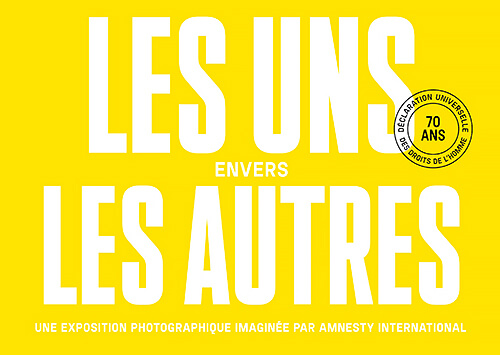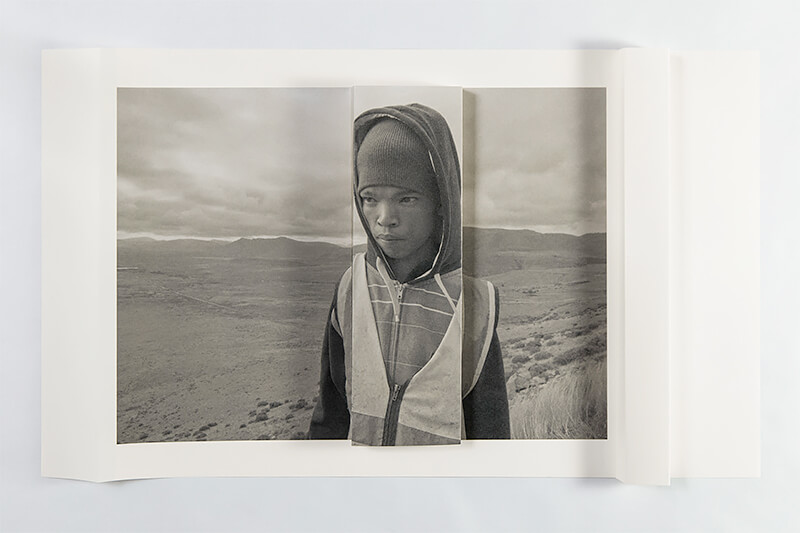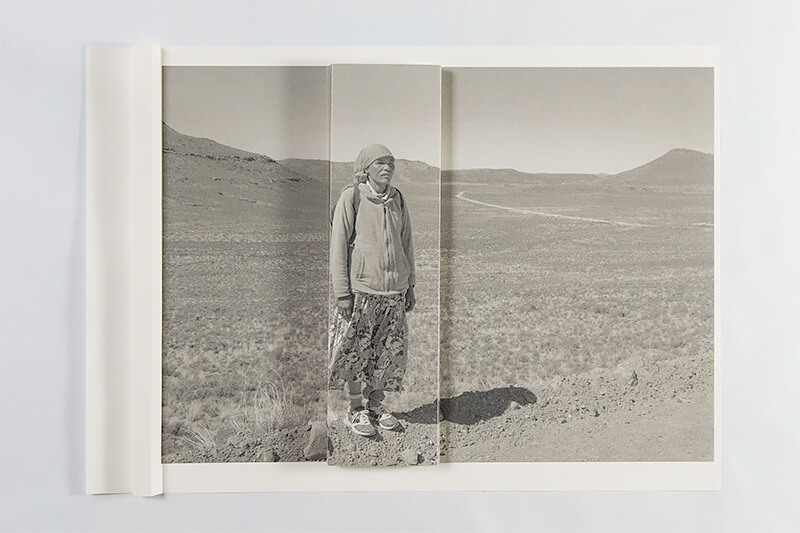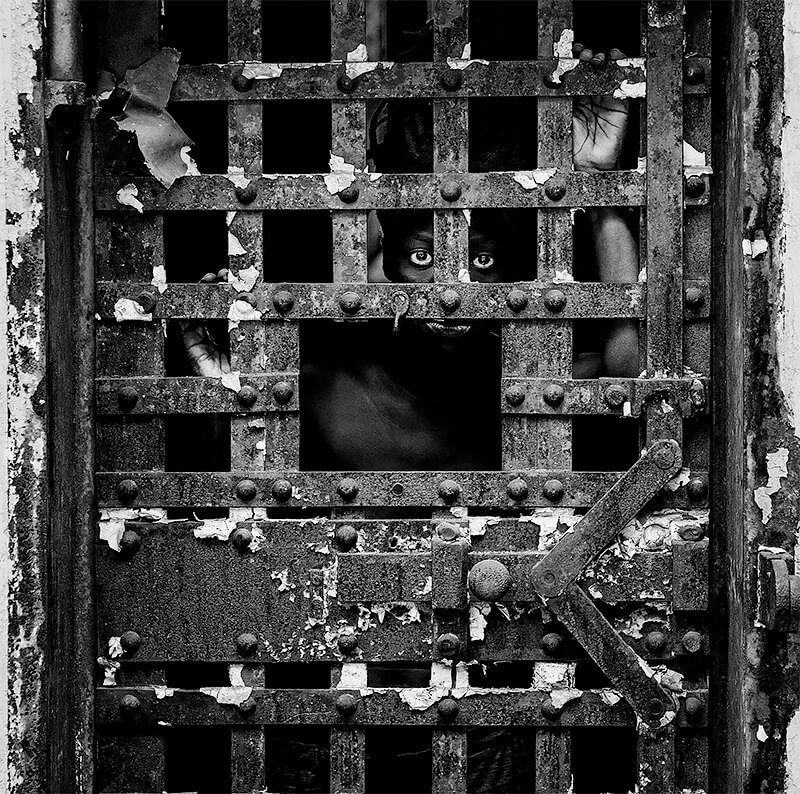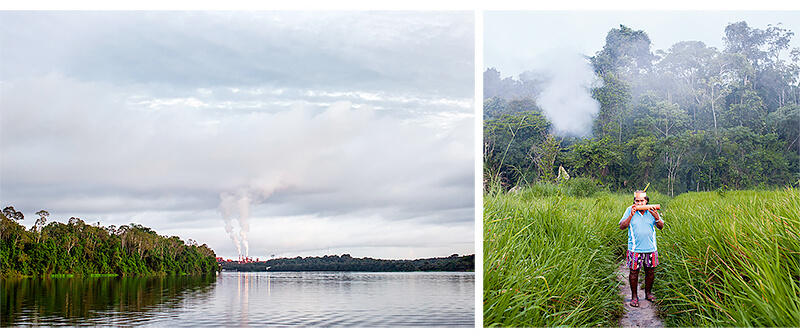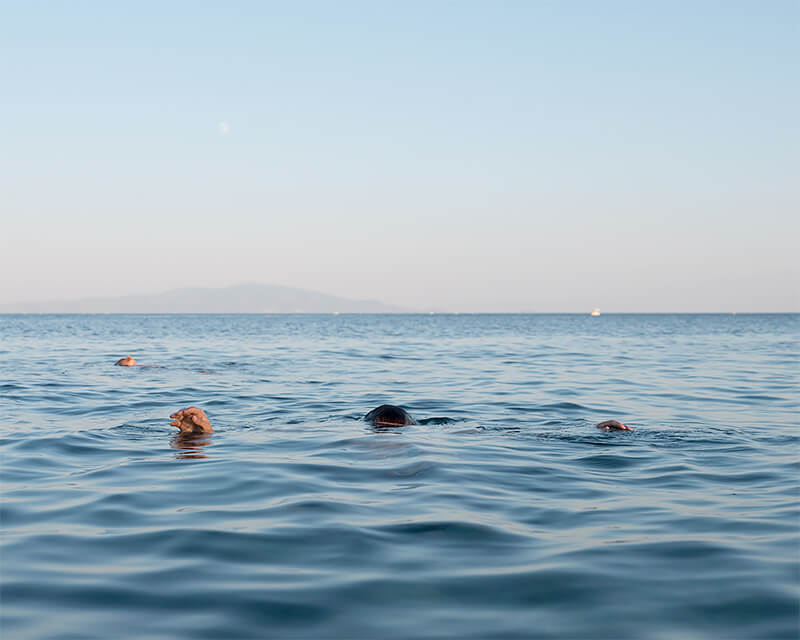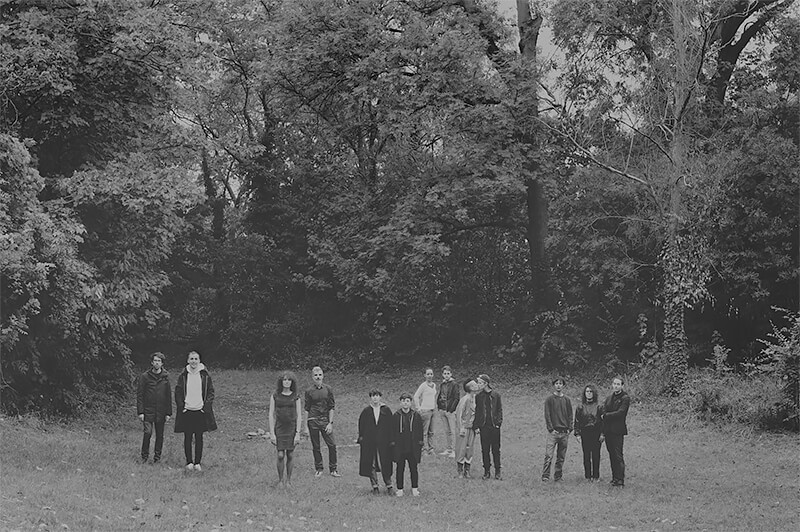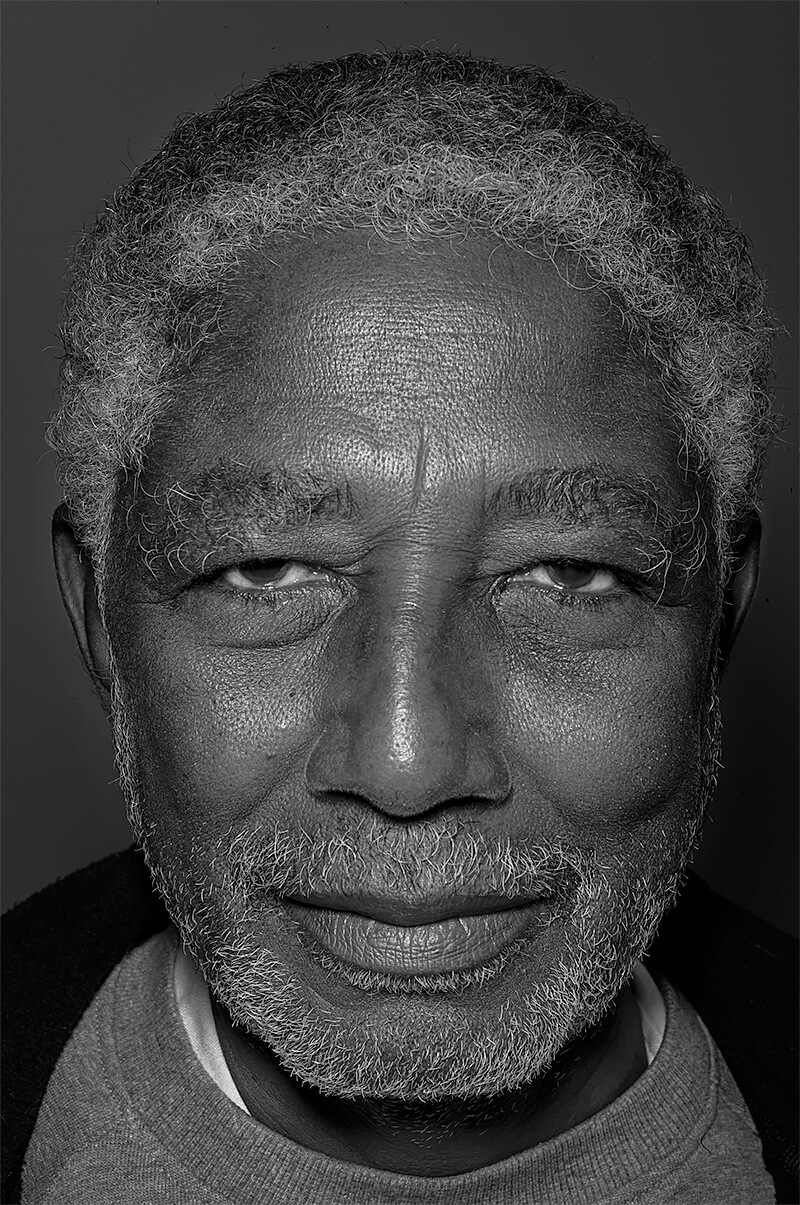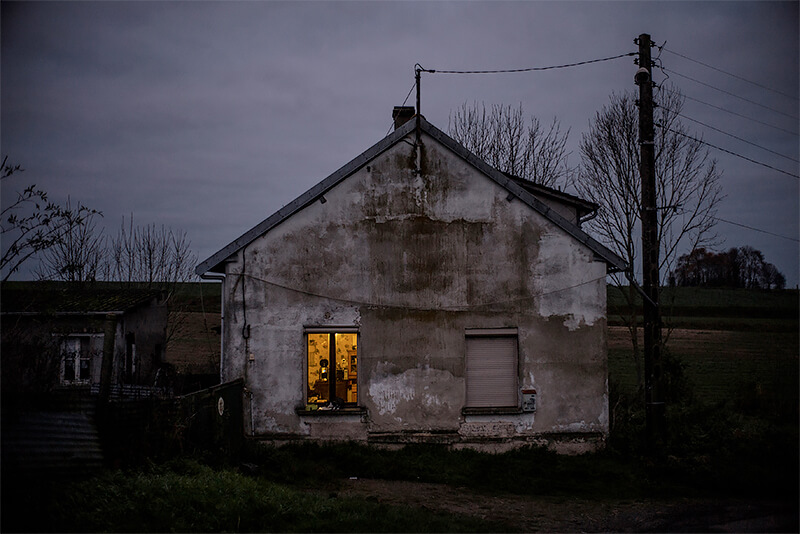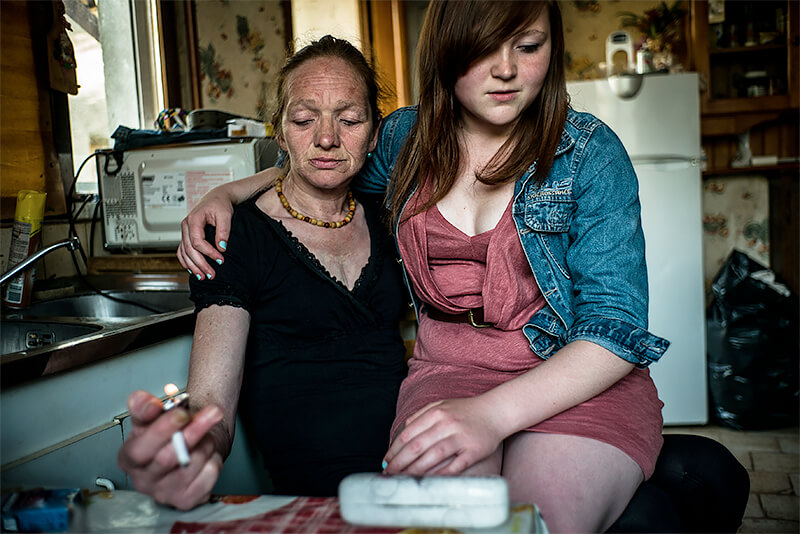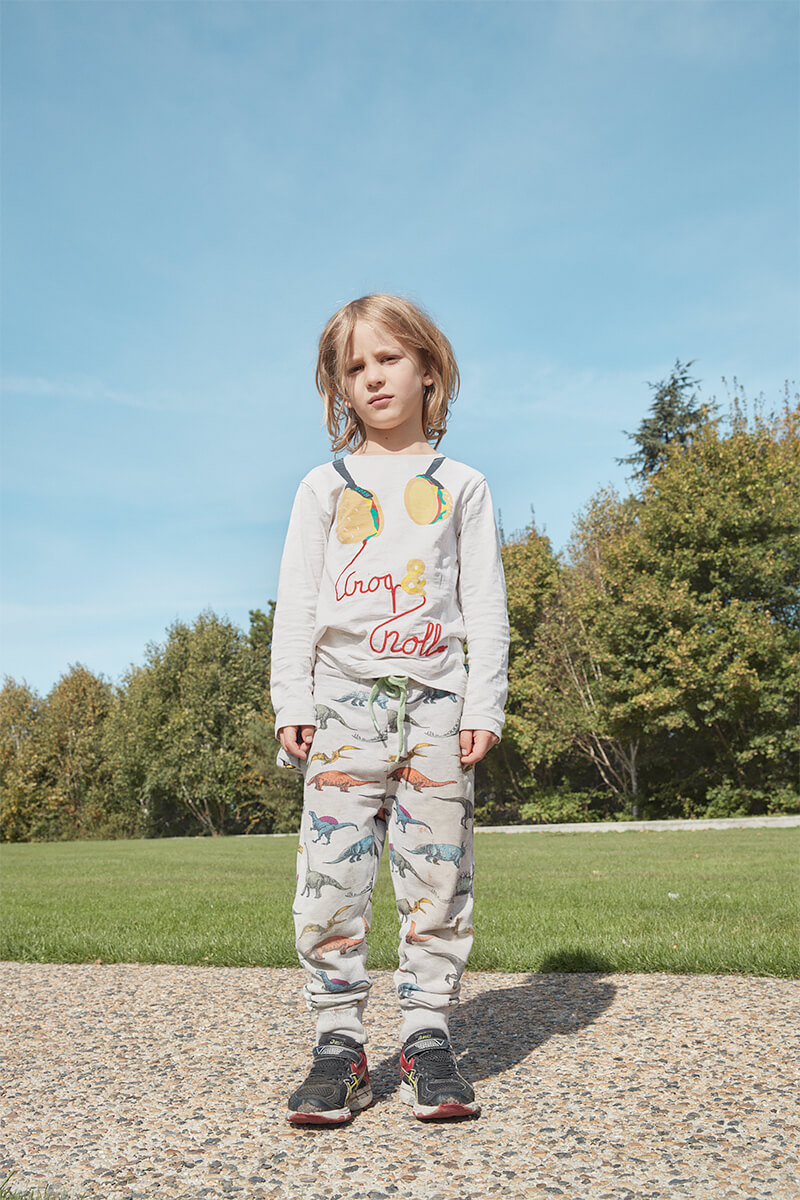Featured photographers: Bruce Gilden, Claudia Huidobro, Ulrich Lebeuf, Seabastian Liste, Lorenzo Meloni, Zanele Muholi, Yann Rabanier, Anton Renborg, Smith, Tendance Floue
Where: Galerie Wanted 23 rue du Roi de Sicile, Paris IVe
At the foundation of the fight for human rights
Adopted in Paris by the United Nations General Assembly on December 10 1948, the Universal Declaration of Human Rights - UDHR - represents an unprecedented step forward in the history of humanity. With determination and vision, the authors of the text managed to set out, for the first time, fundamental human rights to be universally protected.
The strength of the text is undeniable and 70 years later, it is still inspiring for those who are fighting for a world of justice, dignity and equality. This milestone document embodies the belief that every human being has the same and strict aspiration to live free and dignified, everywhere in the world. These aspirations have fueled many mobilizations, sometimes individual, often collective to fight for human rights.
It is Amnesty International's mission, every day to fight to reduce injustice, impunity and defend freedom and equality.
The anniversary of the adoption of the Universal Declaration of Human Rights is an opportunity to remember the existence and the importance of this text that founded the fight for fundamental rights. It is also an opportunity to communicate what it contains, to recall the values it defends and to measure its scope. Celebrating this birthday is
a way to celebrate its relevance and at the same time its modernity.
Amnesty International offers a completely new exhibition. Presented in the heart of Paris, were the text was born, it was conceived first of all for a wide audience. The UDHR may be one of the most translated document in the world, few people know well the letter and the spirit of the text.
Amnesty International invited contemporary writers to reflect on how the text resonates in a world that, of course has radically changed in the past 70 years, but that still has the same ideals of equality, justice and dignity.
All these artists have in common a photographic voice, which have accompanied for years the fight and the message of Amnesty International. They were contacted because of their previous work, because of their profound reflection on the human condition and because of their singular, personal approaches.
The exhibition brings together a dozen artists who have each worked on a key concept, an article or an essential statute of the text. Complex notions for which these authors, who come from different horizons ( South Africa, Italy, Sweden, United States or France) - had carte blanche to engage in their subjective interpretation of the text. They each present one or more unpublished works.
This exhibition offers a stage to awaken the interest of the public, to invite people to take a fresh look at a text that will celebrate on December 10, 70 years of existence. A text that is far from being obsolete when it comes to understanding how it allows us to live and to behave with one another.
Article 1.
All human beings are born free and equal in dignity and rights. They are endowed with reason and conscience and should act towards one another in a spirit of brotherhood.
CLAUDIA HUIDOBRO
The works of Claudia Huidobro, a visual artist, are usually composed of photographs found in magazines, cut into random bands, they become raw materials she works with. As part of the request we have entrusted her, Claudia will draw her creative material from the photographic archives of the photo group Tendance Floue.
She will deliver an original work, made up with folding and gluing on what sets us apart and defines us as human beings. Her work aims to reaffirm the values of dignity and humanity that is underlined in Article 1 of this text.
A sensitive work, which without being a literal illustration of this essential article, underlines its strength.
In recent years, Claudia's work has been the subject of several solo and collective exhibitions at Les filles du Calvaire Gallery, as well as at the Maison de l'Amérique latine in Paris with 'Project room' in 2016; at the Festival Off d'Avignon in 2015; at the Vichy Photography Festival with 'Portraits' and at the Rencontres d'Arles with 'L'Arlésienne' in 2014; or at Arendt House of Luxembourg in 2016.
She lives and works in France. Her work is represented by the gallery Les filles du Calvaire in Paris.
PHOTO GROUP TENDANCE FLOUE
For twenty-five years, an indefinable alchemy of ideas and energies has allowed
photographers of the Tendance Floue group to question the practices of photo reportage and to create a singular photographic language. Exploring the world against the flow of a globalized image, watching in the shadows of displayed subjects, seizing distinctive moments.
Tendance Floue is a laboratory: exploring the world and working together to open new
perspectives and diversify in the modes of representation of contemporary photography.
Beyond personal achievements, the photographers have set themselves the goal to nurture a
collective photographic research: confrontation of images, assemblies, combinations,
works combined together give birth to new material.
Echos de la poussière et de la fracturation.
Anna, près de Celery Fontein. Région du Karoo, Afrique du Sud, 2012
© Claudia Huidobro/Galerie Les filles du calvaire, à partir d'une photographie d'Alain Willaume/Tendance Floue
Article 3.
Everyone has the right to life, liberty and security of person.
ZANELE MUHOLI
Zanele Muholi, 45-year-old black lesbian photographer says,
Photography, for me, it's not luxury, but visual activism. Since the beginning,
when she started taking her first pictures, Zanele had a clear idea in mind: fighting for the right to exist, to live, for the South Africa's LGBTI community, uproot it from its invisibility, place it into the light.
Her work goes far beyond social documentary to address frontally the question of identity. Her series Faces and Phases Follow up started in 2006, has three hundred portraits and became emblematic of her approach.
She chose to explore Article 3 of the Declaration, and questions a strong core of
the text: freedom.
Zanele Muholi lives and works in South Africa. She is represented by the gallery
Stevenson, Cape Town / Johannesburg and Yancey Richardson, New York
Article 5.
No one shall be subjected to torture or to cruel, inhuman or degrading treatment or punishment.
YANN RABANIER
Yann Rabanier is one of the portrait photographers you might remember from his
portraits published in Télérama, Le Monde or Libération. Beyond the charisma of the personalities that he photographs using a special lights and staging, his images puzzle the viewer and awake his imagination.
But it is with a more personal project that he will address one of the articles of the Declaration. Yann Rabanier worked on an essential question, about physical and mental integrity. An integrity that Article 5 of the text enforces with the prohibition of the use of torture.
The work of Yann Rabanier exposes naked people, at scale 1, using a printing process
on post-it. An installation that, while highlighting the beauty and dignity of the human,
also emphasizes, via a display that anyone could tear apart, the fragility of these physical and psychological bodies that must always be protected.
Yann Rabanier is represented by the agency Modds
Article 7.
All are equal before the law and are entitled without any discrimination to equal protection of the law. All are entitled to equal protection against any discrimination in violation of this Declaration and against any incitement to such discrimination.
SEBASTIÁN LIST
Sebastián List defends the necessity of immersion, of the total investment. Young photoreporter of 33 years old, he likes to work in the long term, to open the dialogue and the collaboration between subjects and public, by confronting different visions of the world.
In recent years, Sebastián's documentary work has focused on the lives of diverse communities around the world. Originally Spanish, Brazil is nevertheless his country of adoption. Following his previous work, he chose to document the notion of justice by focusing on those who are deprived of it.
His work focuses on the indigenous peoples of Brazil, in the Amazon region. It exposes a
series of failures in access to justice, failures of the justice system and unfair politics. Indigenous peoples are marginalized, stigmatized and the prey of legal discrimination. Justice is a concrete aspiration for these populations threatened by evictions, targeted because they resist to preserve ancestral lifestyles.
Sebastián creates diptychs comparing men and their lands. The apparent sweetness of
his images are corrected by the words of those he photographs, testimony of the injustices suffered. By choosing a specific angle, it is actually an impartial and equal justice for all, that his work emphasizes on.
Sebastián Liste is a member of the NOOR agency
Article 14.
(1) Everyone has the right to seek and to enjoy in other countries asylum from persecution.
(2) This right may not be invoked in the case of prosecutions genuinely arising from non-political crimes or from acts contrary to the purposes and principles of the United Nations.
LORENZO MELONI
Lorenzo Meloni was born in 1983 in Rome. He covered for many international newspapers the
Arab Spring and ongoing conflicts in the Middle East. He exhibited at the Visa for l'Image Festival in 2017 his work on Mosul. Lorenzo's approach is different than the other photographers. He sees desolation in four major battles on the offensive against the Islamic State. He offers a broader spectrum, clearer scenes in bright landscapes but staggering in strength.
Guaranteed by two articles of the text, the right of asylum was clarified as early as 1951 by the United Nations Convention. A right consecrated but disputed especially as the events in the world (conflicts, ecological dramas, economic crises) have pushed millions of people, migrants and refugees, to take the road of exile. Reasons for departure and protection needs are different but in the end, it is the right of asylum, ultimate defense for threatened people, which is weakened because it is challenged by the States supposed to guarantee it.
Lorenzo Meloni has focused his attention on the borders of a Europe that are closing in defiance of its founding principles of openness and hospitality. By working on the security tensions on these land or maritime borders - from Spain to Italy, via Hungary - he delivers a powerful indictment for the defense of the right of asylum and against a safe retreat that denies the ambition of the right to find refuge.
Lorenzo Meloni is represented by the agency Magnum Photos.
Article 16.
(1) Men and women of full age, without any limitation due to race, nationality or religion, have the right to marry and to found a family. They are entitled to equal rights as to marriage, during marriage and at its dissolution.
(2) Marriage shall be entered into only with the free and full consent of the intending spouses.
(3) The family is the natural and fundamental group unit of society and is entitled to protection by society and the State.
SMITH
At the age of 32, Smith is one of the most successful photographers and filmmakers on the Art market. She made herself known in 2010, with a sublime series of portraits of young androgynous. Her work is marked by strong political and aesthetic ideals and her themes revolve around the body, the identity and the transition. The photos are disturbing, a reflection of indeterminate identities, misunderstood, invisible that she sublimates.
Smith has decided to test all aspects covered by this article from the point of view of contemporaneity which bears the imprint a little dated of her time. Yet notions of marriage, family and therefore love, is of an implacable modernity and that is what SMITH proposes by delivering a contemporary family portrait.
She lives and works in Paris. Her work is represented by the gallery Les Filles du Calvaire.
Article 19.
Everyone has the right to freedom of opinion and expression; this right includes freedom to hold opinions without interference and to seek, receive and impart information and ideas through any media and regardless of frontiers.
BRUCE GILDEN
Contrasting images, chaotic framing, grimacing faces: unsheathing his flash
without warning, Bruce Gilden captures the energy of the moment. This unique style mixing unexpected compositions and low angle view shots led him to become part of the famous Magnum agency in 1998.
UDHR news is closely linked to the struggle of those who every day, everywhere
in the world and for the past 70 years, have made human rights more than just a beautiful
Utopia. Lawyers, journalists, trade unionists, students, whether they act alone or within
associations, all have the common goal to promote and defend human rights on a daily basis. Rights that they can defend because the rights to express themselves, disseminate and propagate ideas, to manifest, are protected by the Declaration itself.
Acting for rights in a very concrete way, they embody the ideal of justice and equality
by the Declaration. They are called human rights defenders and a text of the United Nations adopted in Paris in 1998, defined their need to be recognized and protected.
Bruce Gilden has captured a series of portraits of these defenders from all backgrounds and horizons.
He is represented by Magnum Photos.
Article 25.
(1) Everyone has the right to a standard of living adequate for the health and well-being of himself and of his family, including food, clothing, housing and medical care and necessary social services, and the right to security in the event of unemployment, sickness, disability, widowhood, old age or other lack of livelihood in circumstances beyond his control.
(2) Motherhood and childhood are entitled to special care and assistance. All children, whether born in or out of wedlock, shall enjoy the same social protection.
ULRICH LEBEUF
Ulrich Lebeuf seizes an article that raises a demand for social justice inherent in human dignity. Because living with dignity requires having a roof, being able to look after oneself, to work or to to be able to feel integrated, this article is crucial. It carries within it the ideal of social justice that remains relentlessly current. An article that also stresses the role of States which must guarantee the effective enforcement of these rights.
The documentary work of Ulrich Lebeuf attests of this. He continues his work initiated in France, in the region of the Somme. He photographs families plunged in distress whose violence follows the cycle of plant closures that have long structured the region by providing work but also access to healthcare, schools...
Ulrich Lebeuf is a member of the MYOP agency.
Isabelle et Amandine. Elle élève seule sa fille de 16 ans, depuis que ses fils jumeaux, Sébastien et Jérôme, 33 ans, ont quitté le domicile. Amandine est bonne élève, mais le comportement pèche un peu : problèmes de discipline, dénonce son carnet de correspondance.
Série La vallée des oubliés, 2013-2018 © Ulrich Lebeuf/MYOP
Article 26.
(1) Everyone has the right to education. Education shall be free, at least in the elementary and fundamental stages. Elementary education shall be compulsory. Technical and professional education shall be made generally available and higher education shall be equally accessible to all on the basis of merit.
(2) Education shall be directed to the full development of the human personality and to the strengthening of respect for human rights and fundamental freedoms. It shall promote understanding, tolerance and friendship among all nations, racial or religious groups, and shall further the activities of the United Nations for the maintenance of peace.
(3) Parents have a prior right to choose the kind of education that shall be given to their children.
ANTON RENBORG
It is between Paris and Stockholm that Anton Renborg, Swedish photographer born in 1973 in Orebro, finds his balance.
He does not like labels. It must be said that his work, multifaceted, extends from editorial to reportage, from lifestyle to portraiture. His curiosity, his zeal for encounters and his inimitable documentary style, his subtle colors and his visible link with the subject make him an honest and singular artist.
Father of three children, he has without hesitation wished to work on access to education. Get education is to have the means of one's own emancipation, to have the means to
know your rights and therefore claim them. The right to education is recognized in the UDHR and also in many texts of international law. Yet, millions of children around the world remain without it.
Because they are the first to be involved, Anton Renborg has decided to put himself in children shoes. By producing series of portraits in France and Sweden, he intends to confront various realities. Access to education is diverse, as are the representations of children who have access to it or are deprived of it.
Portraits of children mixed with their words to give a complex relief to this right which is sometimes experienced as a constraint but that everyone recognizes ultimately as an opportunity to grow, to emancipate oneself and to be human.
Text translated from the French Press Release.
